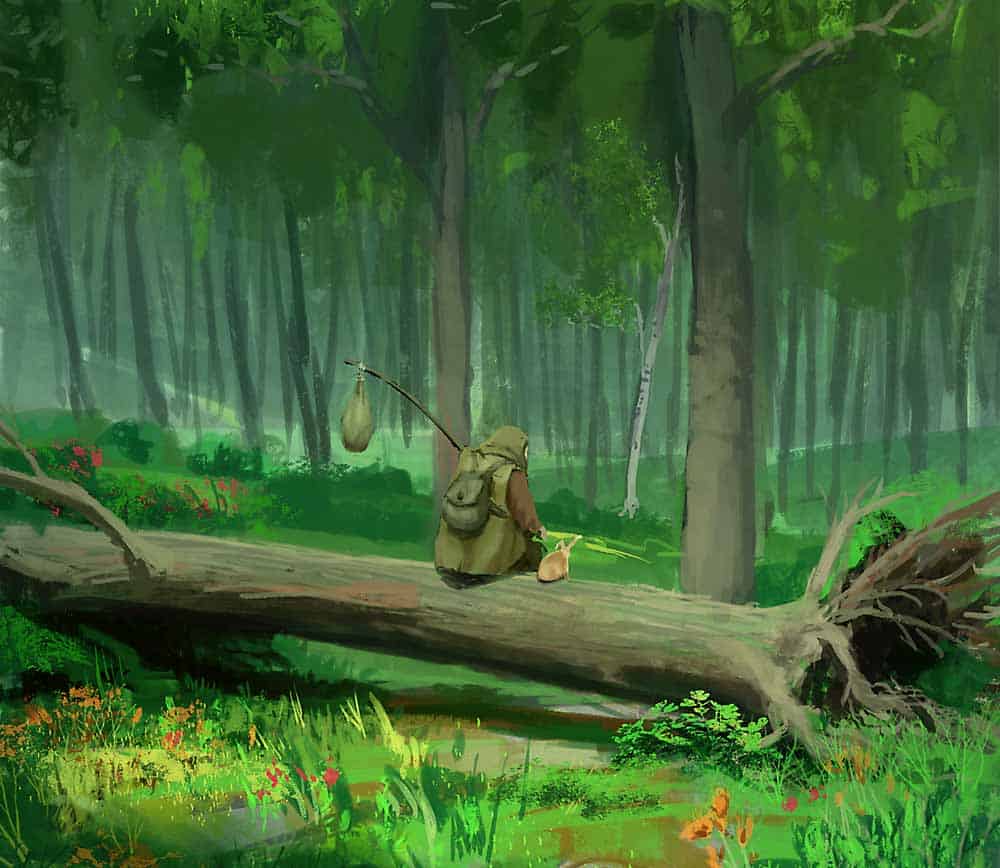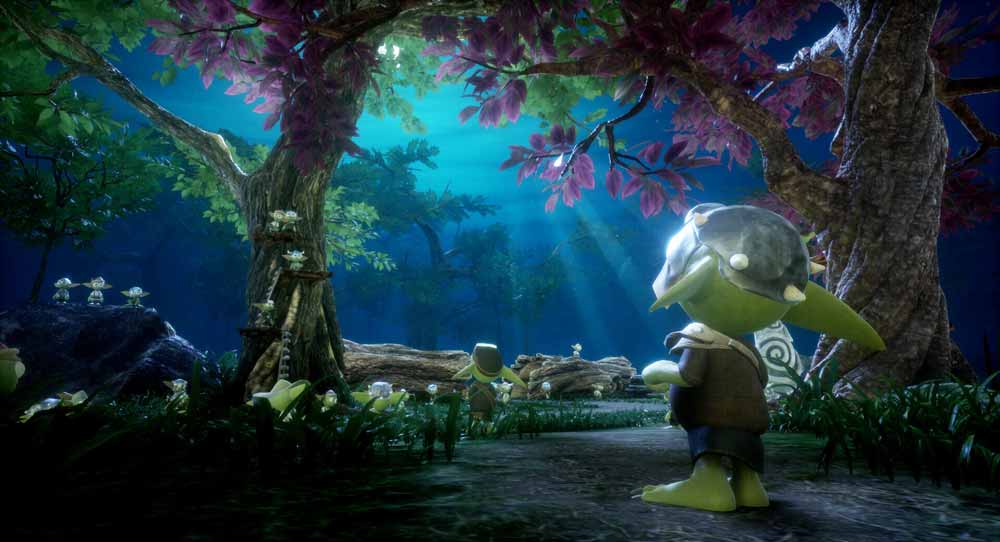Forest Gnome 5e Guide

Gnomes are nomadic race because they could never agree on where to settle, in contrast to most other races who established themselves in certain regions. Gnomes are said to resemble human offspring in many ways, though not in intelligence.
They’re odd, curious, and sociable and enjoy tinkering with and creating clockworks and gizmos. Many people find it weird that they don’t have any other motives; they are just happy to be alive and present.
Forest gnomes are the subrace of the gnome race and one of the smartest and most cunning races to play in D&D 5e. This article will go into detail about the forest gnome 5e race, its history, culture, and more.
What is Forest Gnome?
DnD Forest gnome is the subrace of the gnome and is considered the farthest from the gnome compared to other subraces like deep gnome and rock gnome. Nevertheless, it is a very subrace to choose from.
Forest gnomes are considerably smaller than other gnomes, rarely rising higher than 2.5 feet or weighing more than 30 pounds. Males typically outweigh females by little more than four inches or five pounds.
Male forest gnomes frequently took good care of their beards, cutting them to a fine point or curling them into hornlike spikes, but unlike other gnomes, they typically grew their hair long and free.
They did not feel the need or want to shave or trim their hair much. The skin of forest gnomes was not extremely durable but had an earthy tone and resembled wood in many respects.
Forest Gnome 5e History

Forest gnomes, like other gnomes, rarely kept substantial historical records. There is no hard evidence of the small people’s efforts to protect the forests of Toril from overlogging and other types of devastation, although anthropologists and historians have hypothesized that they might have.
On the other hand, forest gnomes of different villages frequently marked years by noteworthy occurrences, good or terrible, that befell their community. Still, these occurrences are infrequently notable on a larger scale and have little meaning to outsiders.
Forest Gnome 5e Abilities
The +1 Dexterity bonus is a wonderful complement to the +2 Intelligence modifier that comes with being a gnome for this character construct. Wizards aren’t often designed for melee combat, so you can focus on stealth and ranged weaponry as a small-sized character. You can take it a step further and create a Dexterity-based class that uses magic.
| Forest Gnome Ability | Ability Description |
|---|---|
| Darkvision | Darkvision allows these gnomes to see into the tunnels and burrows in which they live. This is obviously helpful in pitch-black dungeons or vast forests. |
| Natural illusionist | You involuntarily produce a sound or an image of a nearby object that endures for the time being. If you cast this spell once more or dismiss the illusion as an action, the illusion also stops. While it does not deal a lot of damage, it is extremely useful. |
| Speak with Small Critters | You can convey straightforward ideas to Small or smaller beasts through noises and gestures. This ability is fantastic if you don’t have a Ranger or a Druid. |
| Forest Gnome Magic | You know about the contrips such as minor illusion or mage hand. After you reach 3rd level, you easily cast 1st level spells, disguise self and speak with animals once with this trait and regain the ability to do so when you finish a long rest. After you reach 5th level, you can also cast the 2nd level spell, blur once with this trait and regain the ability to do so when you finish a long rest. Note that intelligence is your spellcasting ability for these spells. |
| Cunning | Gnome Cunning provides an advantage on Intelligence, Wisdom, and Charisma saving throws for all gnomes. These anti-magic features are the cherry on top of the wizard or arcane class cake. |
Forest Gnome 5e Psychology

Forest gnomes were terribly shy beings that had no desire or need to connect with other races. For the most part, woodland gnomes would prefer to be ignored, as they have been for millennia.
Unlike deep gnomes, this stemmed from an intense feeling of seclusion and affection for the natural environment, along with a general ambivalence towards things beyond their experience. Forest gnomes were extremely sociable, if not particularly animated, among their own kind.
Forest gnomes, like subterranean gnomes, rarely left their secluded dwellings. Forest gnomes, in general, lacked the curiosity that most gnomes have and would only leave their homes under extreme duress.
Forest Gnome 5e Culture
For the player who wants to be successful yet have fun, woodland gnomes have a lot to offer. They are endearing, perceptive, and cunning. In some cases, I’ll look at a character who would typically be played as an elf to see whether it would work better as a woodland gnome.
Forest gnomes can be compared to wood elves in many ways; however, they value Intelligence over Wisdom because wizards do so. People don’t take this persona seriously by default, which is part of the fun.
One minute, a foolish little man is cracking jokes and delivering brilliant quips. The next thing you know, he’s sparking a raging blaze on the battlefield.
The majority of forest gnomes were governed by a loose gerontocracy, with the oldest person in the group acting as an advisor to the others who, in most cases, only reached decisions through consensus.
This ethic continues outside of their dwellings; however, gnomes rarely congregate in groups larger than two or three outside of their isolated communities.
Gnomes, being feywild people, reside in secluded mud houses. This secrecy lends the gnome a mystical edge in concealment and a sense of mystique. These are folks who value simple pleasures and the independence that comes with living a natural existence.
Forest Gnome 5e Religion

Forest gnomes possessed the strongest sense of the faith of any gnome subrace, albeit it was frequently very different from that of the normal gnome, integrating animistic traditions and a love for the natural world.
Priests were frequently communal leaders who assisted in keeping distant settlements together. When a significant number of woodland gnomes congregate, numerous types of priests are usually present to bless the gathering.
Forest gnomes felt the most connected to Baervan Wildwanderer, who was commonly associated with the untamed locations where forest gnomes live. According to forest gnome legend, Baervan personally handed the maintenance of the woods to his followers, a duty the forest gnomes gladly accepted, and priests of the god frequently acted as forest caretakers.
Segojan Earthcaller was another famous god, and gnomes revered his lessons on how to treat wild animals with respect and kindness. The few woodland gnome soldiers typically covered themselves in grass and roots as a sign of their respect for the god.
Forest gnomes, like most gnomes, dreaded Urdlen’s power, which posed unknown threats; nonetheless, for the most part, the deity had disregarded the gnomes, whom he appeared to exceptionally appreciate.
Interaction With Other Races

Despite being a quiet and secluded tribe, forest gnomes were not particularly hostile or distrustful of strangers. Usually, forest gnomes don’t care about other races, and when they meet outsiders, they’re often amicable, if painfully frightened.
Forest gnomes preferred rock gnomes, elves, and halflings of all kinds, with ghostwise halflings being their favorite of the latter. Forest gnomes got along exceptionally well with elves and ghostwise, because both races shared similar habitats.
Forest gnomes generally did not care about other races, with the exception of orcs , kobolds, and lizardfolk, whose brutal treatment of woods made them natural enemies of the forest.
Forest Gnome Art
Like other hunter-gatherers, the culture of forest gnomes is an odd blend of luxury and hard labor. Forest gnomes spent most of their days working for the community’s benefit, but when they returned home from the forest, they were generally rewarded with a calm existence with minimal sources of stress.
Forest gnomes committed themselves to a range of simple yet outstanding creative endeavors throughout these periods. Among these were gem-cutting and jewelry-making, which forest gnomes, unlike comparably primitive wild elves, strongly preferred.
However, these stunning artworks typically represent the natural environment in ways that most civilized peoples do not. Forest gnomes also created a broad range of tools, although axes are a prominent taboo due to their widespread usage in woodcutting by other races.
Forest gnomes built their dwellings in such a way that they caused as little disruption to the surrounding ecosystem as possible. Forest gnomes, unlike elves, create their dwellings within trees, carving them in a painstaking method established by druids to cause as little harm to the tree as possible.
Each tree hovel is normally a few hundred feet apart from the next, giving each family the seclusion that forest gnomes need. The houses are often built up of multiple tiny chambers stacked on top of one another, with trapdoors and ladders linking them. Each chamber is roughly four feet tall and has windows to bring in light.
Conclusion
Forest gnomes are a rare sight, although they are not uncommon. Forest gnomes might be found in the Feywild, where they had their original homes, and in Aglarond and the Great Dale. Forest gnomes are well-hidden wherever they reside and hence go unobserved by their neighbors, often for generations.
Even though forest gnomes are reserved, shy, and like to live in seclusion, they can also become a charming, cunning wizard-type warrior. While they are not taken seriously on first look, they can also be quite powerful in combat if built properly.
I hope this article has given you the background of forest gnomes.






